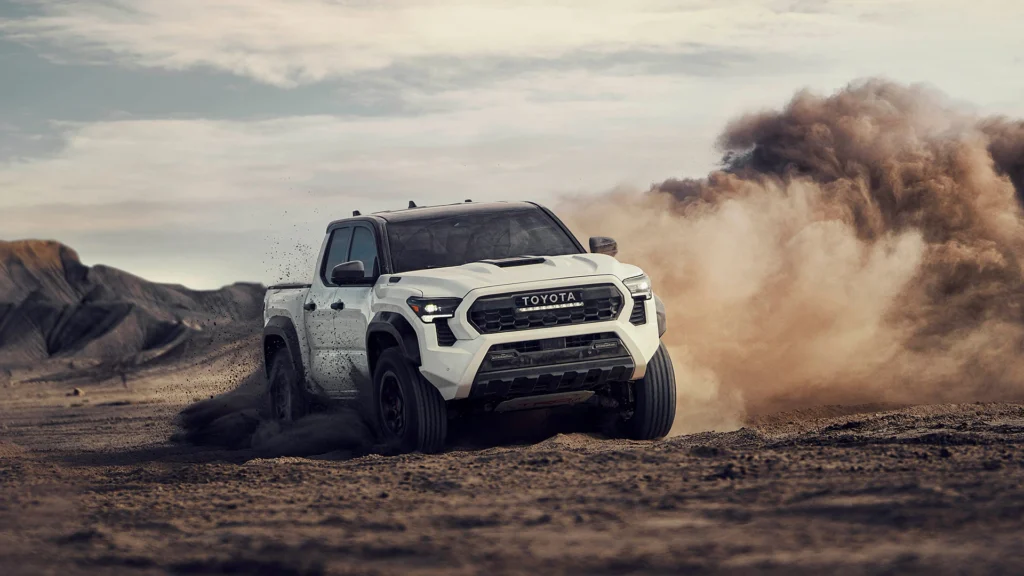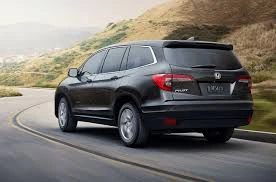America’s pickup battlefield witnesses fierce competition as manufacturers deploy cutting-edge weaponry. Nissan’s Frontier establishes territorial claims while General Motors unleashes Colorado and Canyon siblings. Ford’s Ranger emerges from hibernation, creating unprecedented market turbulence. Toyota responds with engineering prowess accumulated over thirty years of Tacoma evolution.
Despite architectural maturity, the current generation maintains commanding market supremacy. Sales velocity exceeds 230,000 annual units, demonstrating consumer allegiance transcending design age. Used Toyota Tacoma specimens command premium pricing, reflecting inherent durability and brand equity. Electrification initiatives and specialized variants signal a transformative chapter beginning.
Turbocharged Propulsion Paradigm
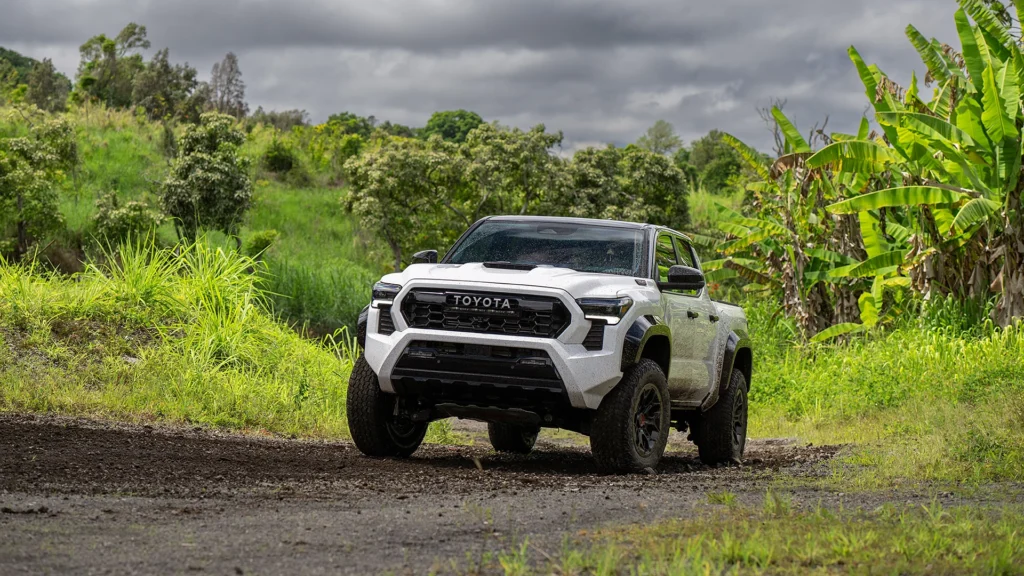
Forced-induction technology supplants atmospheric breathing throughout Tacoma’s mechanical heart lineup. Base SR configurations employ 2.4-liter turbo-augmented mills producing 228 ponies. Rotational force peaks at 243 pound-feet through eight-cog automatic transmissions. This represents a quantum leap beyond preceding naturally-aspirated architectures.
Elevated trim configurations extract enhanced potency from identical displacement foundations. Horsepower ascends to 270 while twist reaches 310 pound-feet territory. Three-pedal purists celebrate six-speed manual availability with synchronized rev-matching wizardry. Automatic configurations culminate at 278 horses with 317 pound-feet.
Electrified assistance debuts through I-Force Max nomenclature borrowed from Tundra lineage. Lithium-ion cells store 1.9 kilowatt-hours supporting 48-horsepower electric motor integration. Combined propulsion crescendos at 326 horsepower accompanied by a staggering 465 pound-feet torque tsunami. This electrified symphony nearly doubles predecessor V6 output.
Drivetrain Sophistication Matrix
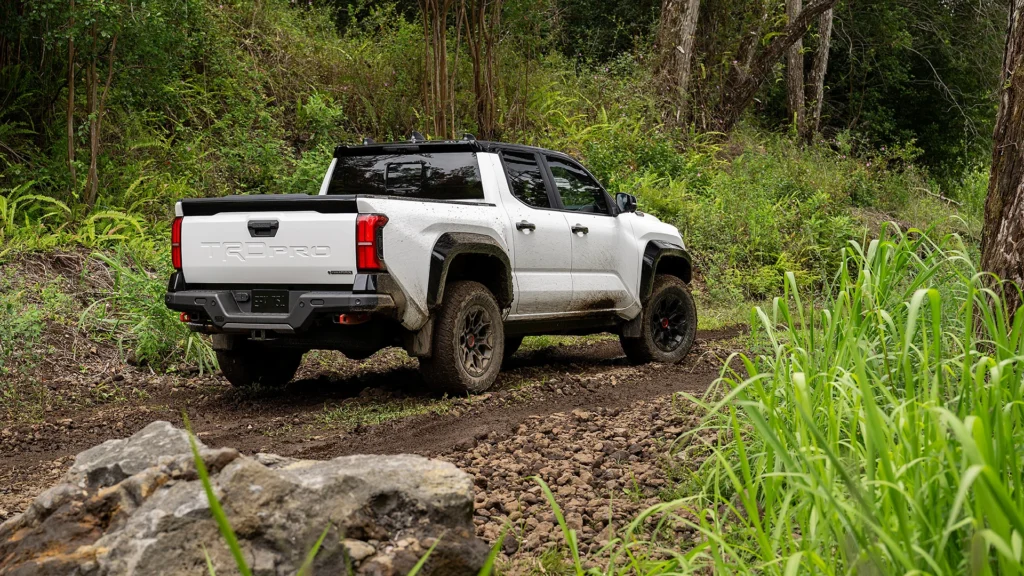
Rear-axle motivation persists across entry-level configurations enhanced through limited-slip differential integration. All-wheel traction systems feature electronically-governed dual-range transfer assemblies. High-low gearing ratios accommodate diverse topographical challenges. Advanced slip mitigation algorithms harmonize with upgraded differential technologies seamlessly.
Hybrid-equipped variants exclusively deploy permanent all-wheel-drive architectures for optimal traction distribution. Lockable center differential enables torque vectoring across challenging substrate conditions. Digital control modules orchestrate power allocation based on instantaneous grip feedback. This methodology surpasses conventional part-time systems in sophistication and effectiveness.
Aesthetic Evolution and Design Language
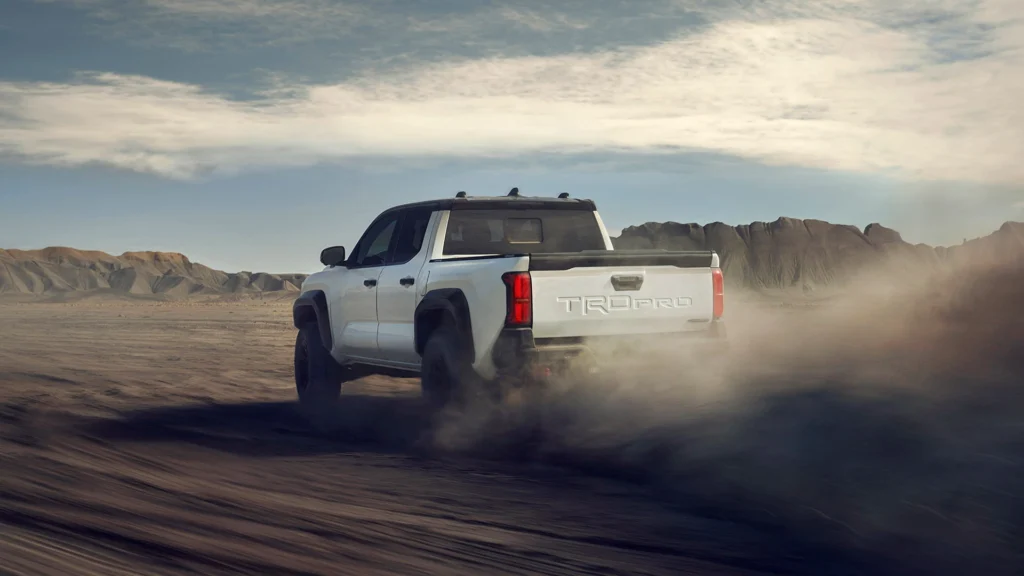
Exterior metamorphosis emphasizes aggressive functionality over conservative predecessor styling philosophies. Narrow-profile luminaries merge seamlessly into reconstructed facial architecture. Simulated air ducts amplify visual hostility while preserving aerodynamic coefficient targets. TRD Sport specimens showcase obsidian grille matrices punctuated by central Toyota medallions.
Premium Limited iterations exhibit chromatic badge treatments complementing horizontal fin arrangements. Coordinated wheel finishes establish visual cohesion throughout luxury-focused presentation packages. Trail-oriented variants brandish vintage “TOYOTA” typography spanning complete grille expanses. Skid plate armor and horizontal LED illumination strips communicate capability-first design philosophy.
Rolling stock selections mirror intended deployment scenarios across hierarchical trim structures. TRD Pro assemblies mount 18-inch stealth wheels shod with 33-inch Goodyear terrain-conquering rubber. Trailhunter configurations pair distinctive bronze-anodized 18-inch rims with identical aggressive tread patterns. These combinations optimize both aesthetic appeal and functional performance simultaneously.
Platform Engineering Renaissance
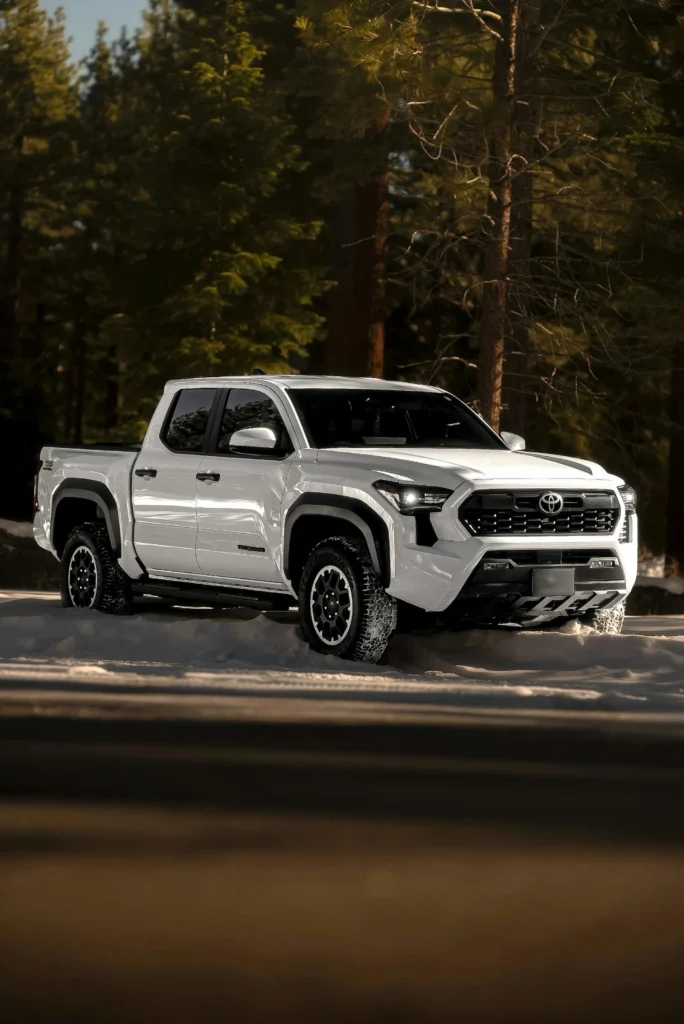
Toyota’s TNGA-F foundation integrates ultra-high-strength steel throughout load-bearing chassis members. Strategic aluminum deployment in superstructure components achieves meaningful mass reduction targets. Multi-link rear suspension geometry replaces archaic leaf spring arrangements across premium trim levels. This transition enhances ride sophistication while preserving cargo-bearing capabilities.
Damping calibrations vary between trim hierarchies optimizing dynamic characteristics for specific applications. SR5 crew cab configurations benefit from refined multi-link rear suspension kinematics. TRD Sport and superior grades receive bespoke tuning for enhanced cornering dynamics. Individual calibrations target distinct customer demographics and usage scenarios effectively.
Cargo Hauling and Trailer Pulling Dynamics
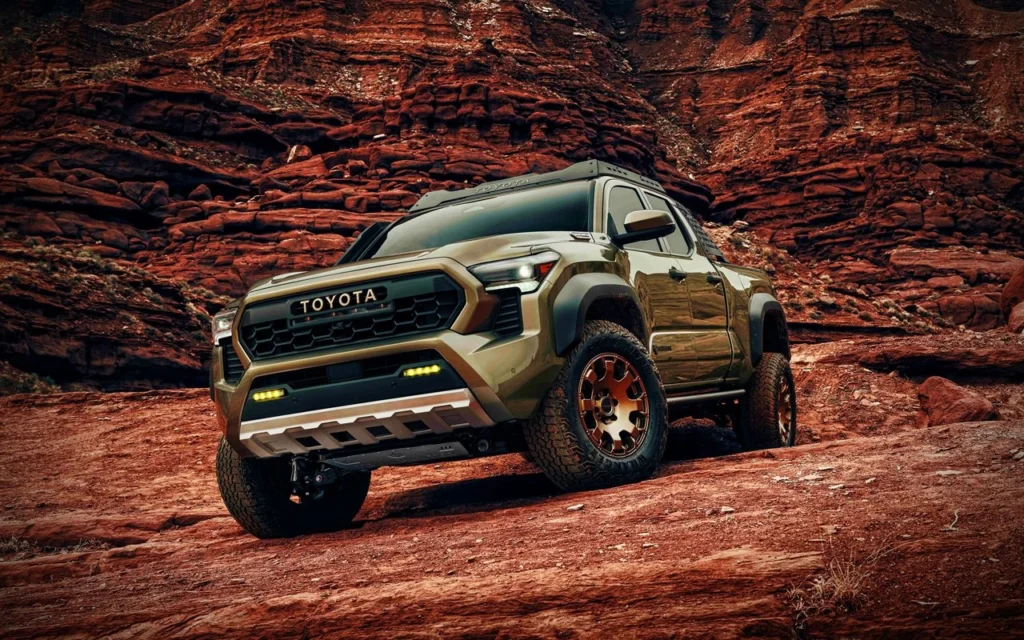
Trailer pulling capacity experiences marginal decline versus outgoing generation specifications. SR5 I-Force and TRD PreRunner variants achieve 6,500-pound maximum trailer ratings. This constitutes approximately a 300-pound reduction from previous-generation apex specifications. However, enhanced payload metrics compensate for decreased towing prowess across practical applications.
TRD Off-Road configurations demonstrate amplified payload capacity reaching 1,709-pound ceiling ratings. Preceding generation peak specifications topped 1,685 pounds across comparable trim designations. Sophisticated trailer management features encompass brake control modules and reversing guidance systems. Digital mirror technology augments visibility during trailer maneuvering operations substantially.
Cabin Technology and Ergonomic Refinement
Entry-level infotainment architectures incorporate 8.0-inch capacitive touchscreen interfaces throughout. Premium Limited, TRD Pro, and Trailhunter variants escalate to expansive 14.0-inch multimedia displays. Complementary 12.3-inch digital gauge clusters supersede traditional analog instrumentation in elevated trims. Base configurations retain 7.0-inch digital cluster presentations for essential telemetry visualization.
Cordless smartphone integration eliminates physical connectivity requirements for Apple CarPlay and Android Auto. Qi-standard wireless charging surfaces accommodate contemporary device power replenishment needs. Detachable JBL Bluetooth speakers enhance outdoor recreational flexibility significantly. Ten-driver JBL premium audio systems deliver exceptional acoustic experiences throughout passenger compartments.
Comprehensive Protection Technology Matrix
Toyota Safety Sense 3.0 deployment spans the entire trim hierarchy without exclusions or compromises. Pre-impact detection incorporates pedestrian recognition algorithms for urban environment protection enhancement. Lane departure monitoring systems provide corrective steering inputs maintaining roadway positioning. Variable-speed adaptive cruise control manages highway driving responsibilities autonomously and safely.
Proactive Driving technology premieres exclusively within Toyota’s commercial vehicle portfolio. Integrated camera and radar arrays augment adaptive cruise functionality beyond conventional implementations. Autonomous braking, acceleration, and steering corrections operate seamlessly on moderately curved thoroughfares. This innovation represents substantial progression in semi-autonomous vehicular assistance technology.
Terrain Conquest Capability Enhancement
Multi-Terrain Select programming spans both high-range and low-range four-wheel-drive operational modes. Tripartite surface optimization addresses Mud, Dirt, and Sand substrate challenges specifically. Crawl Control technology operates with reduced acoustic signature while maintaining quintet speed adjustability. This essentially provides terrain-following cruise control for challenging off-road navigation scenarios.
IsoDynamic Performance seating incorporates integral shock absorption mechanisms for occupant comfort optimization. Revolutionary seat designs attenuate chassis vibration transmission during rugged terrain traversal. Driver cervical and cranial stabilization reduces fatigue accumulation during extended expedition activities. This technological advancement represents a paradigm shift in automotive ergonomic engineering applications.
Trailhunter Expedition-Grade Specification
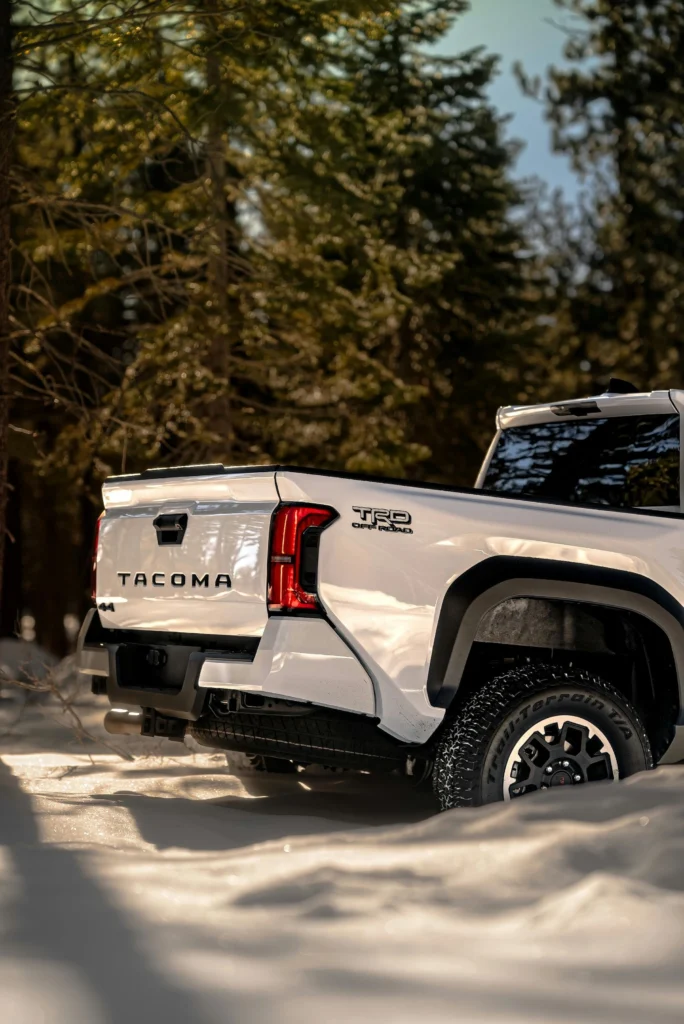
Trailhunter designation targets dedicated overlanding constituencies with purpose-engineered modifications throughout. ARB-calibrated 2.5-inch monotube Old Man Emu dampers superseded standard Fox shock absorbers. Australian suspension engineering expertise optimizes extended off-road expedition comfort and capability simultaneously. Reinforced steel bumper construction provides enhanced impact resistance over polymer alternatives.
Reinforced recovery attachment points facilitate emergency extraction procedures across challenging terrain. Enhanced rooftop tent mounting provisions accommodate expedition camping equipment safely and securely. Dual cargo bed length options cater to diverse overlanding equipment storage requirements. This specialized approach addresses expanding adventure tourism demographic segments strategically.
The used Toyota Tacoma marketplace anticipates substantial value enhancement through these technological innovations. Historical reliability metrics establish strong foundations for used Toyota Tacoma investment confidence. Contemporary advancements position future used Toyota Tacoma specimens for sustained market dominance. Pricing revelations await production timeline confirmations for expectant customer bases nationwide.
